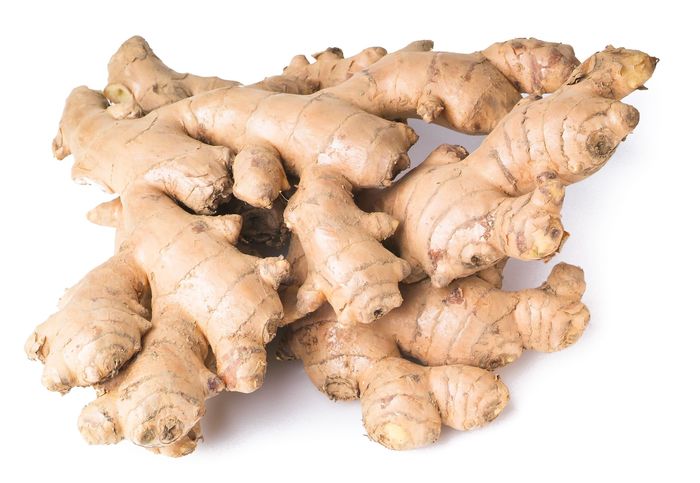Ginger
It is a root of Asiatic origin which is grown from India to Malaysia.
It is commonly used in the gastronomy of India, China, Japan, Indonesia and the Caribbean islands. The part that is used is the root (rhizome), peeled and without the skin.
It can be bought fresh and dried and crushed.
Nutritional information (0.1 kg)
Energy
80.0
kcal
Carbohydrates
17.7
g
Proteins
1.8
g
Lipids
0.75
g
Sugars
1.7
g
Salt (Sodium)
13.0
mg
Folic acid
0.0
ug
Vitamin C
20.0
g
Vitamin A
244.0
ug
Zinc
0.0
mg
Iron
5.3
mg
Calcium
3.25
mg
Cholesterol
0.0
mg
Polyunsaturated fatty acids
0.1
g
Monounsaturated fatty acids
0.1
g
Saturates
0.2
g
Fiber
2.0
g
The data is merely a guide and should not be used for medical purposes. Those responsible for the web disclaims any responsibility.
-
Type of dish
- Beers
- Cocktails
- Breakfasts and brunch
- Burguers
- Juices, milkshakes and beverages
- Shellfish
- Bread and pastries
- Pizzas, patty
- Dessert
- Pasta
- Sándwich
- Pastries
- Finger foods
- Ice creams and sorbets
- Legumes
- Salads
- Eggs
- Patty
- liqueur
- Harvard plate
- Main course
- Meats
- Fish
- Birds
- Vegetables
- Soups and creams
- Rices
- Coffee, chocolate and infusion
- Cheeses
- Appetizers and canapes
- Temperature
- Cuisine type
- Additional culinary preparation
- Conservation technique
- Seasonal recipes
-
- Aromatic herbs
- Beverages
- Big game hunt
- Bread and pastries
- Canned goods and pickles
- Cereals
- Condiments, spices and additives
- Cooked, salted, preserved and cold meats
- Dried fruits and nuts
- Dry pulses
- Edible oils and vinegars
- Eggs and derivatives
- Feathered game hunt
- Fish cuts
- Fishes
- Insects
- Kitchen and bakery tecniques
- Kitchen and bakery utensils
- Meat cuts
- Meats
- Milk, cream and derivatives
- Mushrooms
- Offal
- Pasta, rice, flour and derivatives
- Poultry
- Seafood
- Service techniques
- Service utensils
- Vegetables cuts
- Vegetables, fruits, tubers and seaweed

